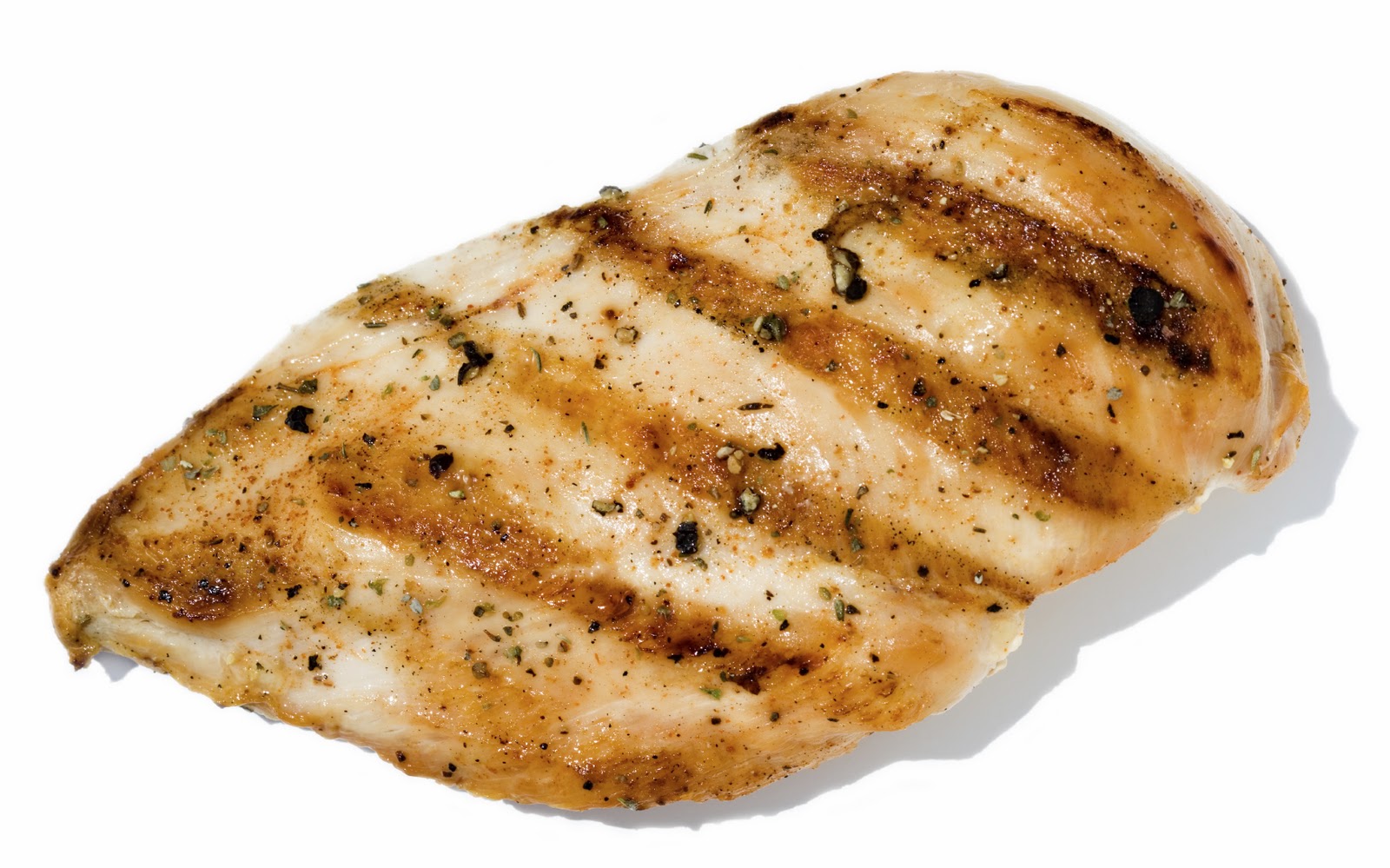26 Oct Step by Step Shredded: The Methods
In the first part of this article we discussed who this plan is for and the basic guidelines for diet and training. Check that out first if you haven't already.
The First Step - Figure Out The Food
No step in this process is more important than the first one. In fact, it’s the one that all of the other steps are built upon and lays the groundwork for us to move forward.
Diet is the keystone to being shredded and recovering from your weight training workouts. As such, the rule with food is to eat as much as possible while still losing the amount of weight we are after, as opposed to eating as little as you can get away with. It sounds obvious to many, but a large part of success is mental and if your mindset is one geared towards eating the most food versus the least food. I have seen many people who desire to lose weight immediately default to the “2 chicken breasts a day diet” which will prove to be a lesson in futility.

Not a whole days worth of food
The goal of this step is to achieve two weeks of consistent weight loss with no deliberate cardio. (If your normal weekly routine includes some form of “cardio” like a dog walk, and it will be in place the entire duration of the time you are using this strategy we will simply count that as baseline and not worry about it.) I use 2 weeks because body weight can fluctuate on a daily basis, and this step is so important to the process that we can’t leave it to chance that we calculated this part on an accidental measurement. I like to see 1 pound each week here, but slightly more or less will not matter.
I typically see this happen right around bodyweight x 12-14. For a 200 pound lifter, that’s somewhere between 2400-2800. Those with faster metabolisms err on the high side, those with slower ones head to the lower end. Those of you who generally don’t gain or lose weight on their current plan simply subtract about 500 calories and start there.
If you don’t know where to begin, simply pick the highest number and start there. Leave the calorie estimators alone as they will only be a guess for you anyway.
Step one is over when your weight loss stalls for 2 consecutive weeks. This may take a few weeks, and the longer the better because we want to milk each step for all its worth before advancing to the next one.
Step 2 - Figure Out The Cardio
No one ever accused Al Gore of being lean and shredded, but he does know a thing or two about Inconvenient Truths… And when it comes to entering the realm of extremely leanness its both true and inconvenient that very, very few people can get away with doing no cardio, or energy systems work, or WODs, or metcon, or GPP or whatever the cool kids are calling it these days.

"You sir, need to do cardio to get #StupidShredded"
As mentioned above, I like to keep the food intake as high as possible for as long as possible, so the next step is not to drop calories when the weight loss stalls, but to add in a small amount of cardio.
Given that cardio sessions only burn a few hundred calories(especially low-to-medium intensity ones that do not increase your metabolism much), I have found that only adding one session is generally not enough to get things moving again, and even two is a bare minimum.
As such I recommend starting with 2-3 cardio sessions a week, ideally separated from your main weight training workout by 6-8 hours or on off days, but they can just as easily be done afterwards with extremely minimal difference in results for those short on time.
For the sake of simplicity I will consider “a session” to be either 20-30 minutes of low to moderate intensity cardio, or 10-15 minutes of your favorite HIIT. In the beginning when we aren’t doing much I like to add HIIT as recovery should still be good and then we will add on less taxing cardio as we get deeper into the plan. Start at the bottom end of the time range for now and in future steps it will give us room to increase it.
If you have access, the best form of cardio is some kind of sled or prowler work. Push it, pull it, drag it, sprint it, grind it… It doesn’t matter. When performed with some PLAZMA or even Mag10, it can even aid in recovery and potentially facilitate even more muscle growth during the cut.
For the HIIT, The type really doesn’t matter all that much as long as you are sucking wind and going HARD for the intense sections.
I’ve had the best experience with the recumbent bike as you can really hunker down, press back against the seat and just blast away. I have also had success with the rower (if you can keep good form), and even the elliptical if its a well built one. Not exactly hardcore, but it gets the job done and has the added bonus of working more, and different, muscles than the bike. Treadmill sprints can work, but I find the risk of injury and joint wear-and-tear to not be worth it.

Zone out and go HARD on this bitch
Warm up for 2-3 minutes before starting to count the time, so a 10 minute interval session will actually take 12-13 minutes.
I encourage rotation throughout the week to avoid local over-training of the legs (remember you're still squatting and have a regular leg day or 2 every week as well), repetitive use injury potential, and quite honestly just sheer boredom. I’ve even been known to do 10 minutes on 2 or 3 different machines.
The regular cardio sessions can be any of the above done with less intense parameters, or simply walking at a brisk pace if you don’t have time to go to the gym or just want to get outside.
Step 2 is over when your weight again stalls for 2 consecutive weeks.
Step 3 and Beyond
Once you have established your baseline level of calories, and then added in the minimum level of cardio to get the scale moving again almost all of the hard, intellectual work is done. From here you simply “add a step” in the form of another cardio session, extending previous cardio sessions, or by dropping calories by 200 when your fat loss stalls again. This should jump start your fat loss back up again.
As mentioned above I prefer to add cardio since keeping food intake as high as possible should be a priority. I personally believe it is better to burn the calories than the omit them.
Putting It All Together: A Sample Plan
As always we will use the quintessential 200 pounder lifting 4 days per week. This is what a typical plan may look like, not an exact layout of what to do every week. Yours may look similar, but different.
Step 1: Set calories to body weight x 14 to begin, 2800 in this case, and check weight for 2 weeks. If weight loss is not happening drop 200 calories from your daily menu and recheck. Repeat if necessary. Lets say we end up needing to start at 2400 before weight loss begins.
Step 2: Once weight loss has stalled, add in two 10 minute HIIT sessions of bike sprints, and one 20 minute Medium Intensity session.
Step 3: After 3 weeks weight loss stalled again, extend the HIIT sessions by 5 minutes a piece, and the Medium intensity by 10 minutes.
Step 4: To keep ahead of the fat loss stalling add on another 20 minute session the following week. Our lifter is now doing cardio after every lifting session.
Step 5: Time is becoming an issue so now we bite the bullet and drop 200 calories from our daily intake.
Step 6: Add on 2 minutes to each HIIT session, and bring the second medium intensity session to 30 minutes.
Step 7: We have hit a wall at 14 pounds of fat lost and our lifter is already doing cardio at every session. Very pleased with how he looks but want to take it a bit further to really see what being lean looks like. Drop 200 calories again (now at BWx10)
Step 8: Approaching the level of leanness he is shooting for, but already very low on calories, our lifter decides he is willing to wake up early 2 days a week for a few weeks to get in 2 more medium intensity sessions at 30 minutes before work.
Step 9: Success! Utilizing this stepwise approach our lifter was able to achieve his fat loss goal. It was tough towards the end, but it was simple to plan out all along the way.

Step by step you reach the top! Or in this case the bottom levels of body fat
Frequently Asked Questions
Q - What do I do after the I reach my target weight?
A - At the end of the plan most people are doing too much cardio and eating too little food for the plan to be sustainable. The goal for most lifters should be to transition back to Step One + 200 calories in about four weeks, increasing calories and decreasing cardio in that time frame.
If you remember Step One is our “No Cardio Weight Loss” level, so by adding a few hundred calories to this it should put us back in line with our metabolic rate. From there you can decide to maintain your weight or add another few hundred calories and attempt to add on more quality mass.
Q - How long does this plan take?
A - This plan isn’t for beginner and as such you shouldn’t have too much fat to lose. Having said that, You should experience about 1lb fat loss per week from start to finish. Depending on how much fat you have to lose it could take anywhere from 12-20 weeks.
Q - How low can I take the calories?
A - I generally don’t see people doing very well mentally once they start going below 10 calories per pound. It can be done for short periods towards the end of the plan, but as a general rule this is the point where people start getting very hungry, mentally foggy, recovery is impacted and some people can even start getting headaches and lethargy.
A strategy I have used with success are to have one or two “low days” where instead of dropping 100-200 calories per day every day throughout the week, you drop the calories to something like 500-700 on just one or two days. This works great with an intermittent fasting approach where you just have a moderate sized dinner.
Many people would rather suffer bigger on 2 days than suffer a little bit every day of the week.
Q - Can I speed up the process at all? I want to be shredded NOW!
A - A bit, but not much. If you aren’t in a rush the slow and steady approach is the best way to ensure that you are losing the highest amount of fat, but if you want to “get it over with” in 8 or 12 weeks, you can decide how much you are willing to do cardio wise, how long you can tolerate being at 8-10 calories/pound and just backtrack from there.
In one of my earlier experiments with the plan (when I was young and single) I was willing and able to do two, short HIIT sessions a day. So I started at 3 sessions and added a session every week until I was doing 2-a-days for a few weeks, in addition to weights 5 days a week. Along with that I dropped 100 calories every week. Worked great and didn’t take long, but is ultimately unsustainable.



No Comments